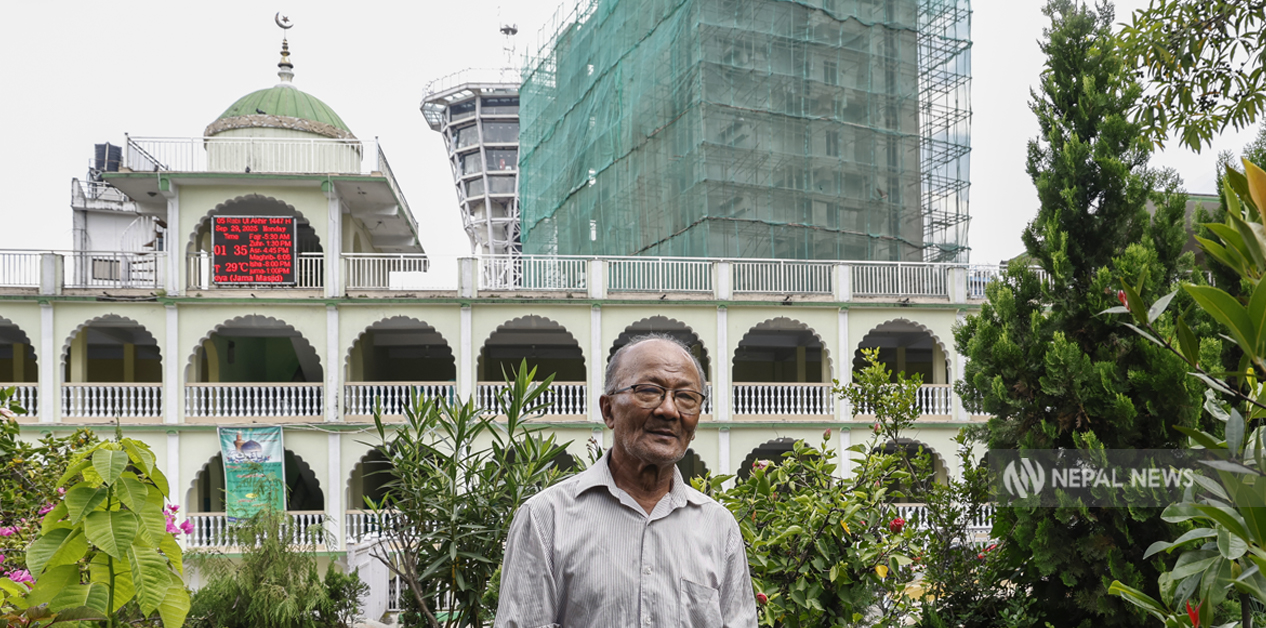

On September 1, 2004, as many as 12 Nepali workers who had gone to Iraq for foreign employment were brutally murdered. The extremist group Jamaat Ansar al-Sunna claimed responsibility for the killings.
The reaction in Nepal was fierce — angry mobs turned not only against manpower companies but also against mosques. A wave of vandalism swept through the streets.
In the midst of the chaos, an attempt was made to set fire to the country’s oldest mosque—the Kashmiri Jama Masjid near Rani Pokhari in Kathmandu. Items looted from inside the mosque were even carried and thrown at the statue of King Mahendra in Durbar Marga (King’s Way).
The crowds, numbering in the thousands, linked the killings in Iraq to “Muslim extremism” and, out of ignorance, began to target Nepali Muslims as well.
But the anger began to dissolve when they stumbled upon something unexpected—a nursery inside the mosque.
Among the things being dragged out in fury, some in the mob were stunned to find a framed picture of Lord Shiva, a prominent Hindu deity, along with a portrait of Goddess Kali. Shock rippled through the crowd.
What were Hindu gods doing inside a mosque? As unbelievable as it seemed, the story was true—and at its heart was 69-year-old Mohan Mali, caretaker of the nursery inside the mosque. His family has tended this sacred garden for over a hundred years.
Let’s return to that moment 21 years ago. Following the Iraq incident, tensions in Nepal were running high. The government was struggling to restore order. But it was the mosque’s own maulanas who came forward to calm the storm—with a story of harmony.
They spoke to the media, reminding the public that Nepal has always honored mutual respect among religious communities. They offered the example of Mohan Mali: “We have never stopped anyone from practicing their religion, traditions, or festivals—even within the mosque. We have lived together in peace.”
When I visited Kashmiri Takiya one morning in the first week of September, I found Mali tending to the flower plants after completing his morning prayers.
“My father and I have been working here for over a hundred years,” he said. “We have never been stopped from observing our religion or culture. We celebrate festivals here openly and pray with full freedom.”
The nursery he runs is named Shiva Nursery—after both the Hindu god and his late father, also named Shiva. Mali never put up a signboard outside, aware that he was inside a mosque.
“People are often surprised when they come here. But I worship freely and eat according to my customs,” he says proudly. Inside his room, images of various Hindu gods and goddesses hang on the walls.
When his father began the nursery, there were four ropanis of land. Today, due to surrounding construction, only one and a half ropanis remain. Still, more than 100 varieties of flowers continue to bloom. Twice a year, flowers from this nursery are offered at the shrine during special pujas (rituals).
“My father taught me everything. The mosque management has always said, ‘Do as much as you want,’” says Mali.
Fifty years ago, when he began assisting his father, the nursery boasted over 500 flower varieties. Many have since disappeared. Once, rare blooms like Kankan Champa (Jasmine), Chinese Champa, Opium, Phulkas, Laskal, and Antismon filled the space. They even had over 50 types of Gurans (rhododendrons).
“People used to come here to buy flowers even during the Buddhist era. That time is gone now,” Mali says with nostalgia.
He remembers a moment from history that made him internationally known in September 1976, the day Chinese leader Mao Zedong died. The Chinese embassy in Kathmandu came to the mosque looking for white flowers to pay tribute.
“They searched the entire city but found none—only here. I gave them 500 to 600 white flowers, though one had a yellow streak,” Mali recalls. “Each flower cost one rupee. Later, they even offered me a job in China. But I declined.”
He was also offered a chance to go to Germany. Around 1983, the German football team came to Nepal for a friendly match. Mali welcomed them with bouquets. The players were so impressed that they asked the German Embassy to take him to Germany.
“But my parents didn’t agree. From that time, I learned to drink beer and smoke cigarettes with the Germans. Whenever there was an event at the German Embassy, I was the one to carry flowers,” he chuckles.
His family’s ties to Nepal’s parks and public spaces also run deep. When Ratna Park was established in 1963, his father helped design and build its garden. At the time, Mali was studying at Adarsha School in Gabahal in Kathmandu. But seeing how his father struggled to balance both jobs, he left school to help with the nursery full-time.
“No one ever insisted I read the Quran,” he says. “That’s why, in a world often divided by religion, Kashmiri Takiya Mosque stands as a glowing example of Ganga-Jamuni Tehzeeb—a tradition of coexistence. Where Ram is present, so is Rahim.”